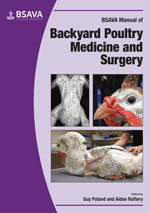
Full text loading...

Respiratory disorders in backyard poultry tend not to be problems that affect single birds, but diseases that affect the whole flock. This chapter covers the epidemiology, aetiology and pathogenesis, clinical signs, differential diagnosis, post-mortem findings, laboratory diagnosis, treatment, prognosis and prevention of a wide range of respiratory diseases in poultry.
Respiratory disorders, Page 1 of 1
< Previous page | Next page > /docserver/preview/fulltext/10.22233/9781910443194/9781910443194.15-1.gif

Full text loading...













